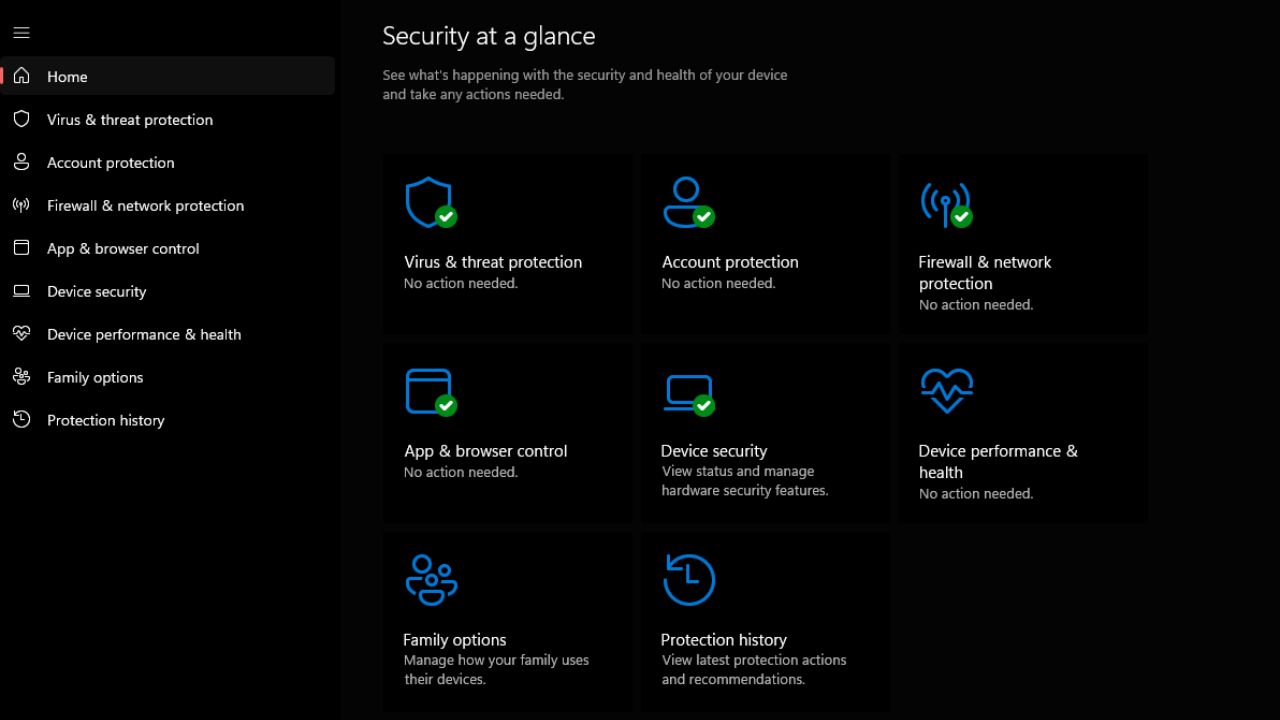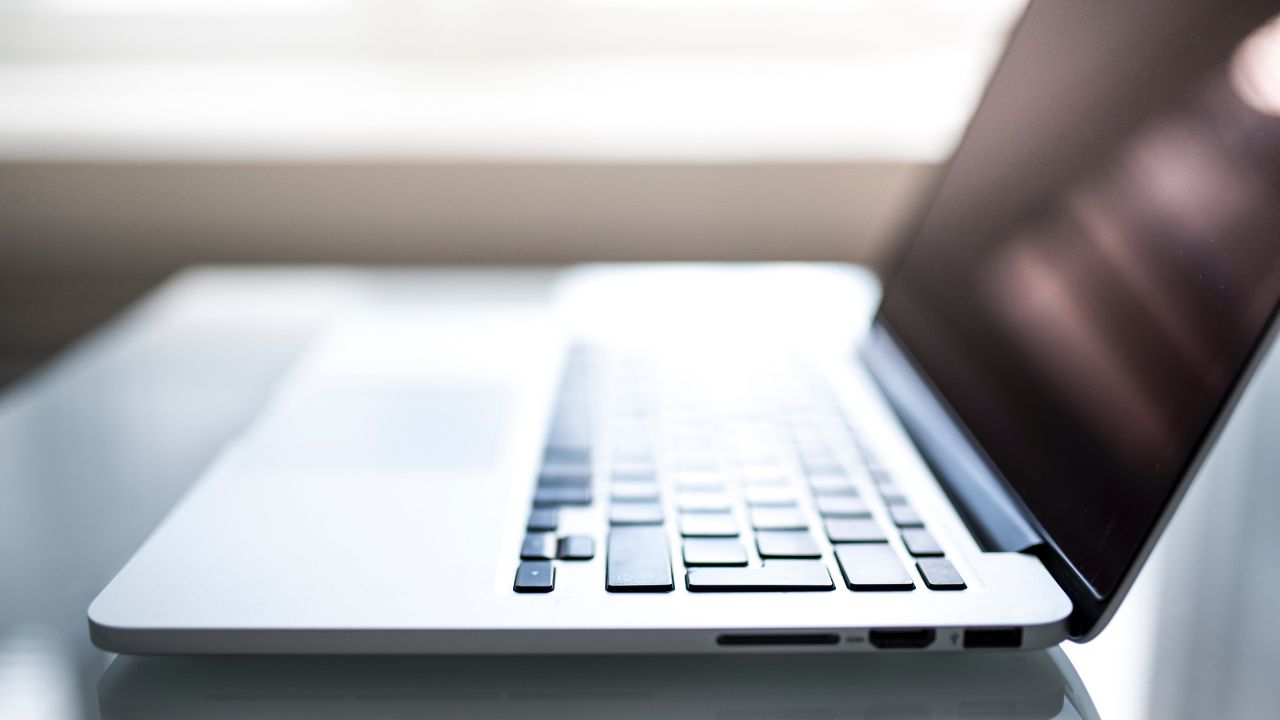If you’re reading this, you might have gotten a new PC recently or you’re considering buying one in the future. Thaddeus, from Ellenton, Florida, reached out to us with this question after purchasing a new PC.
I just bought a new laptop for the first time in 8 years (how times change!). I want to set this one up correctly and in the most secure way possible from the very start. I mean from the first time I boot it up. QUESTION: Is there a checklist of suggestions that I can follow to set-up a new computer correctly & securely? – Thaddeus, Ellenton, FL
Yes, Thaddeus, we have some great suggestions for you. Here’s how to set up your new PC fresh out of the box. And for those who have a new Mac, check out these 5 essential steps to set up your Mac.
1) Getting started with Windows

When you first open your new PC, Windows will ask you to pick some basic settings. Here are the steps to follow:
- Select your language when prompted.
- Choose your region and keyboard layout.
- Connect to Wi-Fi when prompted. Select your network and enter the password.
Microsoft now strongly encourages you to create an online Microsoft account. However, if you prefer a local account, you have a few options:
- Disconnect from the internet before reaching the account creation screen.
- When prompted for an email, select “I don’t have this person’s sign-in information.”
- Then, choose “Add a user without a Microsoft account.”
- Enter a username and password when prompted.
- Customize privacy settings as desired.
- Wait for Windows to complete the setup process.
Note that the exact steps may vary slightly depending on your specific Windows version. For the most up-to-date instructions, it’s recommended to check Microsoft’s official documentation page.
2) Updating to the latest version of Windows
First things first, you should make sure you have the latest version of Windows. It doesn’t matter if you’re using Windows 10 or Windows 11 — you should be using the most up-to-date version. Luckily, Windows allows you to easily update your new computer.
Once you connect your PC to the internet, Windows will automatically search for updates. If you want to update your computer once it has been set up, here’s how:
Windows 10:
- Click Start and select Settings
- Select Update & Security and then click Windows Update
- Click Check for updates, and if one is available, click on Download and install
Windows 11:
- Click Start and select Settings
- Select Windows Update
- Windows should automatically start Checking for updates, if not, select Check for updates
- Click Download and install
DOES YOUR WINDOWS 11 PC KEEP RESTARTING? LET’S FIX THAT FRUSTRATING PROBLEM
3) Install a new browser
Windows comes preinstalled with Microsoft Edge. The browser is perfectly serviceable, however, it may not be your cup of tea and you might want to go with an alternative. You might prefer Google Chrome, Mozilla Firefox, Opera GX or Brave instead. Each has its upsides and downsides.
Google Chrome is more ubiquitous and features a huge library of extensions for you to download and use. It also connects to your Google profile, letting you have a more seamless experience across multiple devices. Firefox is more catered towards privacy and also features a pretty big selection of extensions. And if you’re a fan of gaming or have gamers in your family, Opera GX has features that focus on your CPU, RAM, and network connectivity. Or you may want to go with Brave, a browser that blocks ads and trackers by default, and also offers built-in firewall and VPN services. Brave is fast, secure, and privacy-focused.
To download any of those browsers, just head to their respective websites and click on the version that works best for your PC.
WHAT TO DO IF YOU THINK YOUR PC HAS A VIRUS
4) Setting up your computer security settings
Windows 10 and 11 both come preinstalled with Windows Security (also known as Windows Defender). It’s turned on by default unless you have a third-party antivirus preinstalled. You can access it pretty easily, here’s how:
- Click Start and select Settings
- Select Windows Security
- Use the options on the screen and make sure everything has a green check

Courtesy of: Microsoft
Windows Defender, integrated as a complimentary antivirus software in Windows 10 and 11, offers capabilities to detect and remove a variety of malware, along with firewall and device protection features. However, its scope is limited. It does not safeguard against phishing or spam, and its functionality is confined to the individual Windows 10 or 11 system where it’s installed, primarily supporting other Microsoft products. Unfortunately, it lacks compatibility with popular browsers like Chrome, Firefox, and Safari, leaving third-party applications and programs susceptible to security and privacy breaches. Consequently, Windows Defender may not be sufficient for comprehensive security needs, and exploring reliable third-party alternatives could provide more robust and extensive protection.
No matter what the best way to protect yourself from having your data breached is to have antivirus protection installed on all your devices. Having good antivirus software actively running on your devices will alert you of any malware in your system, warn you against clicking on any malicious links in phishing emails and ultimately protect you from being hacked.
Special for CyberGuy Readers: My #1 pick is TotalAV, and you can get a limited-time deal for CyberGuy readers: $19 your first year (80% off) for the TotalAV Antivirus Pro package. Get my picks for the best 2023 antivirus protection winners for your Windows, Mac, Android & iOS devices.
5) Backing up your PC
Backing up your PC gives you some security in case something goes wrong. You can use it to restore your Windows back to normal. And a backup feature is built right into Windows.
Windows 11:
- Connect the external drive for your backup to your computer
- Open File Explorer
- You should see the external drive in the left-side panel
- Copy the content you want to back up by
- Paste the copied files or folders into the external drive
Windows 10:
- Connect the external drive for your backup to your computer
- On the main desktop, go to the ‘Windows’ icon to open the menu
- Click Settings
- Scroll down the ‘Windows Setting’ page, and click Update & Security
- Click Backup
- Select Add a drive
- Choose the external drive or network location you want to back up the files
6) Transferring your files
While transferring files to a new PC can seem daunting, it’s actually quite simple. All you need to do is backup your files onto a cloud storage service like Dropbox, One Drive or Google Chrome. Then log into your service on your new PC and download/restore those files onto your new computer. For an offline option, you could upload your files to a thumb drive or external hard drive. You’d then plug them into your new PC and download them.
7) Cleaning up bloatware
Many PCs bought off the shelf will have bloatware, which is software that is pre-installed by the manufacturer or retailer, often without the user’s consent or knowledge. It’s that unneeded Candy Crush clone or antivirus software trial that you don’t really need taking up space on your computer. Luckily, it’s pretty easy to get rid of. Here’s how:
Windows 10: uninstalling apps:
- Select Start, then select Settings
- Click on Apps and then select Apps & features
- Choose the bloatware you want to Uninstall
Uninstall programs from the Control Panel
- Use the search box to find the Control Panel
- Click on Programs and then select Programs and Features
- Right-click on the program you want to get rid of and select either Uninstall or Uninstall/Change
- Follow the directions on the screen
Windows 11: uninstalling apps:
- Click Start and select Settings
- Select Apps
- Click on Installed Apps and uninstall any bloatware
You’ll also want to have a quality performance optimization program to do a deep clean up all that redundant junk from your device so that it can perform the way it’s supposed to and serve your needs. Here are my top picks for the best performance optimization programs in the industry. Before you clean out your computer with these programs, it’s always a good idea to back up your devices.
8) Register your PC, software and hardware

You should register your device with its manufacturer. It’s an additional record that you’ve bought their product in case you ever need help with it. It also gives the manufacturer a way to contact you in case there’s a recall.
You can register your device online, but that could put you on a mailing list and subject you to spam. One way to combat that is using an alias email. An alias email address is an additional email address that can be used to receive emails in the same mailbox as the primary email address. It acts as a forwarding address, directing emails to the primary email address.
In addition to creating throwaway email accounts for online sign-ups and other circumstances where you would not want to disclose your primary email address, alias email addresses are helpful for handling and organizing incoming communications.
Sometimes, it’s best to create various email aliases so that you don’t have to worry about getting tons of spam mail and having your email eventually stolen in a data breach. An alias email address is a great way for you to stop receiving constant spam mail by simply deleting the email alias address.
My #1 pick for secure and private email is StartMail, which allows users to create unlimited, customized aliases. You can get an Exclusive deal for CyberGuy readers: 50% off: $29.98 for first year ($2.50 per month, billed annually). Includes a free 7-day trial.
Some of StartMail’s best perks include:
- StartMail email address
- 10 GB of email
- Unlimited aliases
- Access email on any device
- Import your contacts easily
- No ads, no tracking
- Send encrypted emails to anyone
See my review of best secure and private email services here
CONTROL SPAM – HOW TO CREATE A QUICK ALIAS EMAIL ADDRESS
9) Set up a password manager
One of the most critical steps in securing your new PC is to use a password manager. Password managers help you generate strong, unique passwords for each of your accounts, store them securely, and automatically fill them in when you need to log in. This helps protect your accounts from hacking attempts and simplifies your online life. After installing your chosen password manager, make sure to set it up and start using it to store and manage your passwords.
By using a password manager, you’ll enhance the security of your online accounts and ensure that you’re not using weak or duplicate passwords, which can be a significant vulnerability. With this additional step, your new PC laptop will be even more secure.
10) What to do with your old PC
The first thing you should do with your old PC is wipe it clean. You don’t want to risk compromising your own data. If you don’t, you could be leaving your information exposed.
Windows 10:
- Click Start and select Settings
- Select Update & Security and then click Recovery
- Click on Get Started and select Remove Everything
- Click on Local reinstall and click on Change Settings, then choose Wipe the drive
- Select Confirm and then Next and then click Reset
Windows 11:
- Click Start and select Settings
- Select Update & Security and then click Recovery
- Click on Reset PC and select Remove everything
- Click on Local reinstall or Cloud download
- Select Change Settings in Additional settings
- Select Clean data
- Select Confirm and then Next and then click Reset
Instead of adding your old PC to your pile of unused tech, consider selling or recycling them. Some services will pay you even if your devices are not working. Here are two services that you can use.
Amazon’s Trade-In Program
Amazon’s Trade-In Program is a quick and easy way for you to earn something from your old and unused electronics. Most older electronics decrease in value as time goes on, so it’s not likely that you’ll be able to earn a ton of money by selling them. Sure, you could always give your old item to a friend or family member if it’s still in good shape. However, if they are going to want to use something newer as well, then this is the perfect way for you to recycle your items and earn money back at the same time. Follow these steps on how this program works.
Click here for ways to sell, donate, or recycle your phone and all of your old devices.
Kurt’s key takeaways
Setting up a new PC might seem like navigating a digital maze, but don’t sweat it. Whether you’re someone who breaks out in a cold sweat at the sight of tech settings or a seasoned computer whiz, these steps are your roadmap to a smoother, safer digital journey. We’ve broken down the setup into bite-sized, manageable chunks that’ll help you transform that shiny new machine from a box of potential into your personalized productivity powerhouse. The best part? By taking a few extra minutes now, you’re basically future-proofing your computer and protecting your digital life. No more unexpected crashes, no mysterious performance hiccups, and definitely no unwelcome security surprises.
What do you do first when you buy a PC? What are your biggest issues or challenges? We’d like to know in the comments below.
FOR MORE OF MY SECURITY ALERTS, SUBSCRIBE TO MY FREE CYBERGUY REPORT NEWSLETTER HERE


